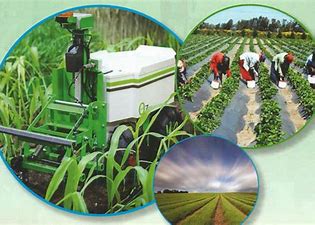Aurélio Amaral says country should create stocks, or harvest will be harmed
06/20/2022
/i.s3.glbimg.com/v1/AUTH_37554604729d4b2f9f3eb9ad8a691345/internal_photos/bs/2022/3/S/jsaeDrQ8AoIaNfJ0GyaA/050618anp025.jpg)
Aurelio Amaral — Foto: Leo Pinheiro/Valor
Even with the announcements of fuel price increases imposed by Petrobras last Friday, there is a great risk of shortage of diesel in the second half. The warning comes from the former director of the National Petroleum Agency (ANP) and consulting partner at Schmidt Valois Advogados, Aurélio Amaral.
To Valor, the expert, who was director of ANP for four years, including during the truckers strike in 2018, said that the shortage can lead to occasional shortages of fuel in regions that depend more on imports, such as the Central-West. Even after Petrobras announcement on Friday, making diesel and gasoline more expensive, the gap in relation to international prices still remains, according to importers.
This inhibits imports, which account for about 30% of the diesel demand in the country, Mr. Amaral warns. The technician, who was also superintendent of supply of the agency, defended the formation of stocks by Petrobras to help reduce the risks of shortages. But, instead of stockpiling, Brazil gets lost in discussions about prices, Mr. Amaral says.
However, he considers a generalized lack of supply unlikely. But he stressed that the lack of diesel can damage the harvest, since the Central-West, the largest grain producer, is more dependent on imports.
Read the main excerpts of the interview:
Valor: What is the scenario of fuel supply in Brazil?
Aurélio Amaral: We need to keep some stock, because diesel is short in the world. It is necessary to pay so that Petrobras has the capacity to import and keep stocks. We also need to maintain some kind of parity [with international prices], at least for now in this current model, so that other players are encouraged to import and to supply part of the fuel that is not produced in the country. To mitigate prices to the consumer, it is necessary to have some compensatory policy, which the government so far has not wanted. If nobody gives in on one side or the other, the road ahead is that of a crisis.
Valor: Will Friday’s increase help?
Mr. Amaral: I think that the hike was necessary. The government and Petrobras are currently going through a dilemma: how to balance a mixed capital company, which has a social role, and holds a significant monopoly. According to the current law, and the way the pricing is established, Petrobras board has no choice but to raise the prices. It is a very difficult situation for those who are ahead of the board to find a way to hold prices without having a compensation that ensures they will not be held responsible by regulatory agencies [for possible losses].
Valor: How is the scenario for fuel importers?
Mr. Amaral: Nobody is importing. We are in a complicated situation. We need to bring diesel, because we are approaching the harvest, but the price [of oil] continues to rise, although it has had a small drop. There is a big pressure on the world demand for diesel. We are heading towards something dangerous. It is a complex issue that requires a systemic look and, mainly, harmony between Petrobras and the government, an environment of less tension and conflict. Today, it looks like a war, which is not good for anyone.
Valor: What are the risks?
Mr. Amaral: We are not stockpiling, because almost nobody is importing, so we are heading towards a big risk [of shortages]. It is a risk derived today from the war and the pressure of the embargoes on Russia [oil exporter].
Valor: Is there room for Brazil to start building stocks today?
Mr. Amaral: Only Petrobras is able to build a relevant safety stock today, because it owns the entire infrastructure. But how to do this without passing it on to prices? It is a difficult equation. In this current crisis, I think it is very difficult to have time to think about increasing stocks, while discussing price impacts. It would also be necessary to review the pricing policy and the remuneration policy for Petrobras’s investors. Under the current policy, it would have to pass on the costs of inventories. This is difficult in today’s politicized environment.
Valor: Will there be a shortage of fuel?
Mr. Amaral: I don’t believe in a widespread diesel shortage. But the risk of occasional shortages is great if we don’t move towards creating some stock. Mainly in regions that today depend on imports, like the Central-West, agribusiness regions, where the demand for diesel will be high in the second semester. We are heading towards a very emotional situation. It will be tense.
Valor: How to reduce the impact of high prices?
Mr. Amaral: I don’t see a way out that doesn’t involve compensation. But this has fiscal impacts on the federal budget, and can affect congressional earmarks in an election year, the government does not want it. It is not a simple discussion, it is complex. The resources have to come from somewhere. It requires cold blood and more calm, not this atmosphere of tension. If it stays just on Petrobras’ account, it would also be necessary to change the remuneration to shareholders, the dividends, it would be necessary to look at the management rules for publicly traded companies. If Petrobras simply does not pass on the prices, it will be subject to losses.
Valor: What do you think of the proposals made so far?
Mr. Amaral: The way the [sales tax] ICMS reduction was proposed, there is no compensation. With the increase in oil prices and the passing on of margins [the tax reduction] will have, in my opinion, an insignificant impact in terms of prices.
Valor: Will the sale of Petrobras’ refineries solve the discussion?
Mr. Amaral: I have always been in favor of divestments, I think they are welcome to create a competitive market. But they must be done with regulatory monitoring to mitigate competitive effects and avoid abuse of economic power in regions where refineries are dominant. It should be done in the medium to long term. This requires a smooth transition, in order to stimulate other investments. We stopped this process in the middle. We didn’t manage to divest all the refineries in order to start a competitive market. Petrobras continues to have a large monopoly.
Valor: What measures are needed for more competition?
Mr. Amaral: Refining was always thought of with Petrobras, in the Brazilian system as a whole. To take this system that was created to act in an integrated way and dismember it, it is necessary to create alternatives. If you simply sell the refinery, you will transfer the monopoly from the public to the private agent. It is necessary to have measures to create import competition. Brazil cannot, by law, have price control. But how to make this transition without some accompaniment? It is complex.
*By Gabriela Ruddy — Rio de Janeiro
Source: Valor International

/i.s3.glbimg.com/v1/AUTH_37554604729d4b2f9f3eb9ad8a691345/internal_photos/bs/2022/2/E/YsqksgSJSBy7TW4N4lxA/210921carlos8.jpg)
/i.s3.glbimg.com/v1/AUTH_37554604729d4b2f9f3eb9ad8a691345/internal_photos/bs/2022/L/a/KEpwRgQPALaA4ZNf1X9g/101219caoa05.jpg)


/i.s3.glbimg.com/v1/AUTH_37554604729d4b2f9f3eb9ad8a691345/internal_photos/bs/2022/c/w/JpiDruShabDHSdrWxs0g/15esp-100-merco-a14-img01.jpg)

/i.s3.glbimg.com/v1/AUTH_37554604729d4b2f9f3eb9ad8a691345/internal_photos/bs/2022/L/a/KYAG9dR12GKb3N76fsEQ/05pol-100-semi-a5-img01.jpg)
/i.s3.glbimg.com/v1/AUTH_37554604729d4b2f9f3eb9ad8a691345/internal_photos/bs/2022/2/o/QI4bLNRuiNFrGyqwlDHQ/15fin-100-rural-c1-img01.jpg)
/i.s3.glbimg.com/v1/AUTH_37554604729d4b2f9f3eb9ad8a691345/internal_photos/bs/2022/p/t/txmOdXTyeaKlVBOrKC2g/img20220531152104518.jpg)